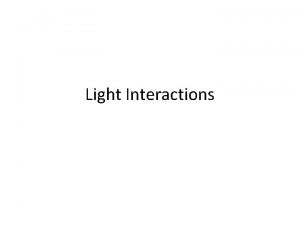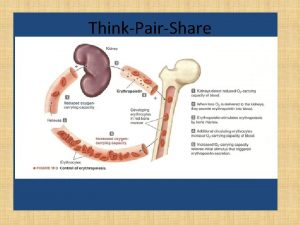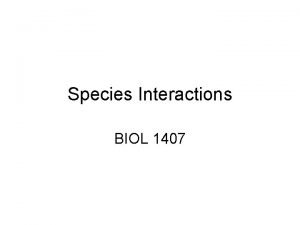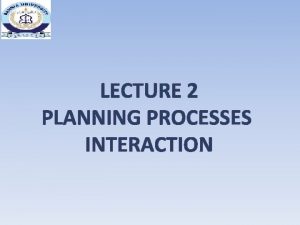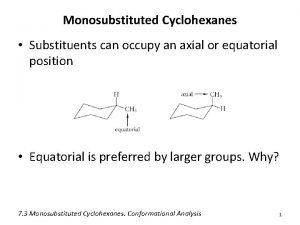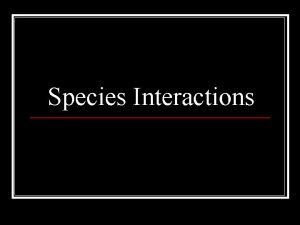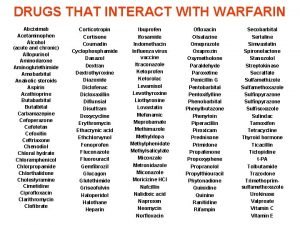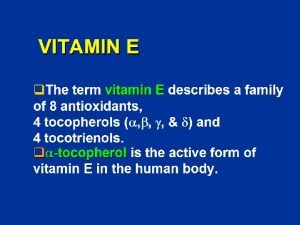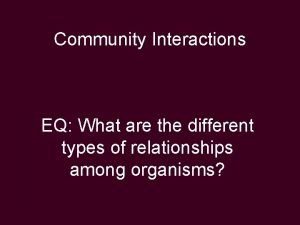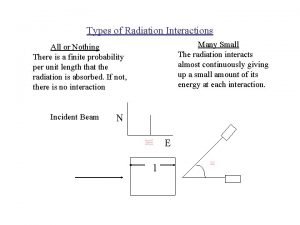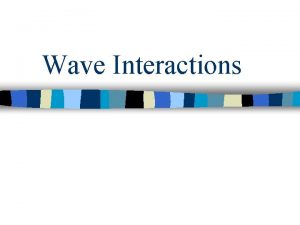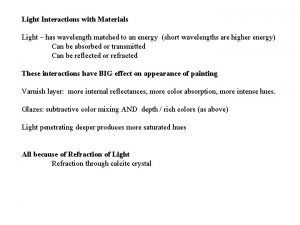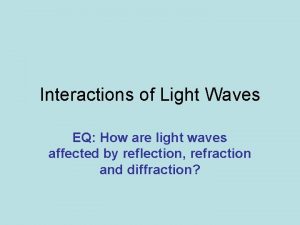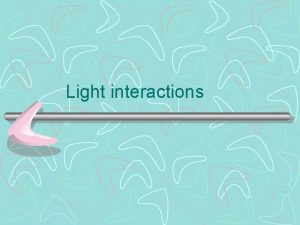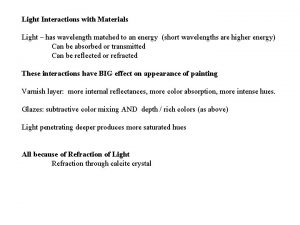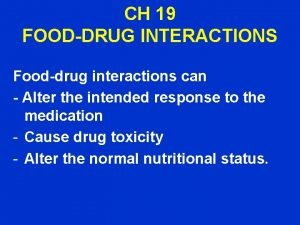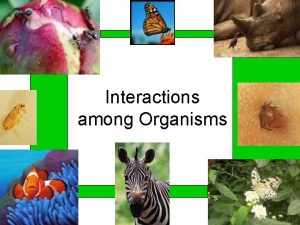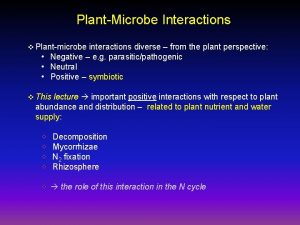Light Interactions What is light Light is an


































- Slides: 34

Light Interactions

What is light? • Light is an electromagnetic (EM) wave. • An EM wave is a wave that consists of changing electric and magnetic fields. • EM waves require no matter through which to travel. • EM waves can be produced by the vibration of charged particles. • The speed of light in a vacuum is about 300, 000 m/s. • EM waves from the sun are the major source of energy for Earth.

The Electromagnetic Spectrum • All electromagnetic (EM) waves travel at the speed of light. EM waves differ only by wavelength and frequency. • The entire range of EM waves is called the electromagnetic spectrum.

Radio waves are used for communication. • AM means amplitude modulation • FM means frequency modulation • Ph. ET Simulation

Microwaves are used in cooking and in radar. • Ph. ET Simulation

The absorption of infrared waves is felt as an increase in temperature.

Visible Light Visible light is the narrow range of wavelengths that humans can see. Different wavelengths are seen as different colors.

Ultraviolet Light • Killing bacteria • Producing vitamin C • Can cause sunburns

Bees see UV light… • So they see the world differently than we do!

X-Rays

Gamma Rays

Light Interactions • The law of reflection states that the angle of incidence is equal to the angle of reflection. • Things that are luminous can be seen because they produce their own light. • Things that are illuminated can be seen because light reflects off them. • Absorption is the transfer of light energy to particles of matter. • Scattering is an interaction of light with matter that causes light to change direction.

Light Interactions • Refraction of light waves can create optical illusions and can separate white light into separate colors. • Diffraction depends on the light’s wavelength. – Light waves diffract more when traveling through a narrow opening. • Interference can be constructive or destructive. – Interference of light waves can cause bright and dark bands.

Law of Reflection: angle of incidence = the angle of reflection


Absorption & Scattering

Refraction

Refraction

Diffraction & Interference

Do You See What I See?

March 27, 2015 • Do Now: Angles of Reflection (share protractors) • Take out HW • No homework tonight

Light & Color • Objects are transparent, translucent, or opaque depending on their ability to transmit light. • Colors of opaque objects are determined by the color of light that they reflect. • Colors of translucent and transparent objects are determined by the color of light they transmit. • White light is a mixture of all colors of light. • Light combines by color addition. The primary colors of light are red, blue, and green. • Pigments give objects color. Pigments combine by color subtraction. The primary pigments are magenta, cyan, and yellow.

Objects are transparent, translucent, or opaque depending on their ability to transmit light.

Colors of opaque objects are determined by the color of light that they reflect.

Colors of translucent and transparent objects are determined by the color of light they transmit.

Light combines by color addition. The primary colors of light are red, blue, and green.

Pigments combine by color subtraction.

The primary pigments are magenta, cyan, and yellow.

Question 1 Ultraviolet light has a higher frequency than infrared light has. Which statement about visible light is true? A. Blue light has a longer wavelength than orange light has. B. Green light has a higher frequency than violet light has. C. Yellow light has a shorter wavelength than blue light has. D. Red light has a lower frequency than green light has.

Question 1 Ultraviolet light has a higher frequency than infrared light has. Which statement about visible light is true? A. Blue light has a longer wavelength than orange light has. B. Green light has a higher frequency than violet light has. C. Yellow light has a shorter wavelength than blue light has. D. Red light has a lower frequency than green light has.

Question 2 Which light interaction explains why you can see things that do not produce their own light? A. absorption B. reflection C. refraction D. diffraction

Question 2 Which light interaction explains why you can see things that do not produce their own light? A. absorption B. reflection C. refraction D. diffraction

Question 3 Which electromagnetic waves is the eye able to see? A. Red, green, and ultraviolet B. Red, infrared, and yellow C. Blue, green, and ultraviolet D. Orange, green, and red

Question 3 Which electromagnetic waves is the eye able to see? A. Red, green, and ultraviolet B. Red, infrared, and yellow C. Blue, green, and ultraviolet D. Orange, green, and red
 Opaque materials
Opaque materials Light light light chapter 23
Light light light chapter 23 Light light light chapter 22
Light light light chapter 22 Light light light chapter 22
Light light light chapter 22 How do earth's spheres interact
How do earth's spheres interact Integumentary interactions with other systems
Integumentary interactions with other systems Interactions
Interactions Intramolecular interactions
Intramolecular interactions Branch of biology dealing with interactions among organisms
Branch of biology dealing with interactions among organisms Accounting information system chapter 1
Accounting information system chapter 1 Wikimedia
Wikimedia Erleada mechanism of action
Erleada mechanism of action Symbiosis and species interactions keystone webquest
Symbiosis and species interactions keystone webquest Ppi drug interactions
Ppi drug interactions Project management process interactions
Project management process interactions Nervous interactions with other systems
Nervous interactions with other systems Wave
Wave Nutrient interactions
Nutrient interactions The properties and interactions of magnets
The properties and interactions of magnets Metformin overdose
Metformin overdose Regional and transregional interactions
Regional and transregional interactions Diaxial interactions
Diaxial interactions Noncovalent interactions
Noncovalent interactions Section 20-1 review species interactions
Section 20-1 review species interactions Cape buffalo and cattle egrets relationship
Cape buffalo and cattle egrets relationship Synergism
Synergism Protein binding interactions
Protein binding interactions Which of the following tells you population density
Which of the following tells you population density Major function of digestive system
Major function of digestive system Qualitative vs quantitative
Qualitative vs quantitative Cobalomin
Cobalomin Different types of community interactions
Different types of community interactions Types of interactions
Types of interactions Wave interactions
Wave interactions Interactions
Interactions
